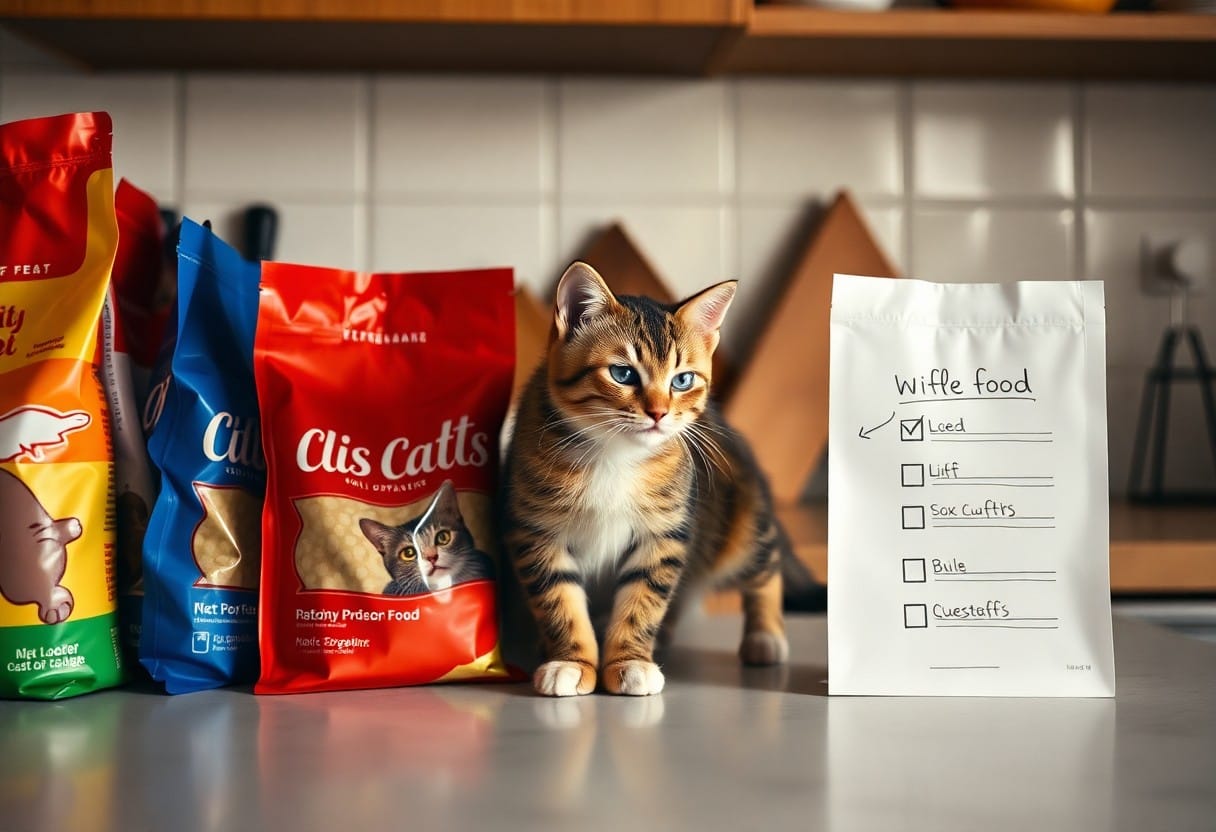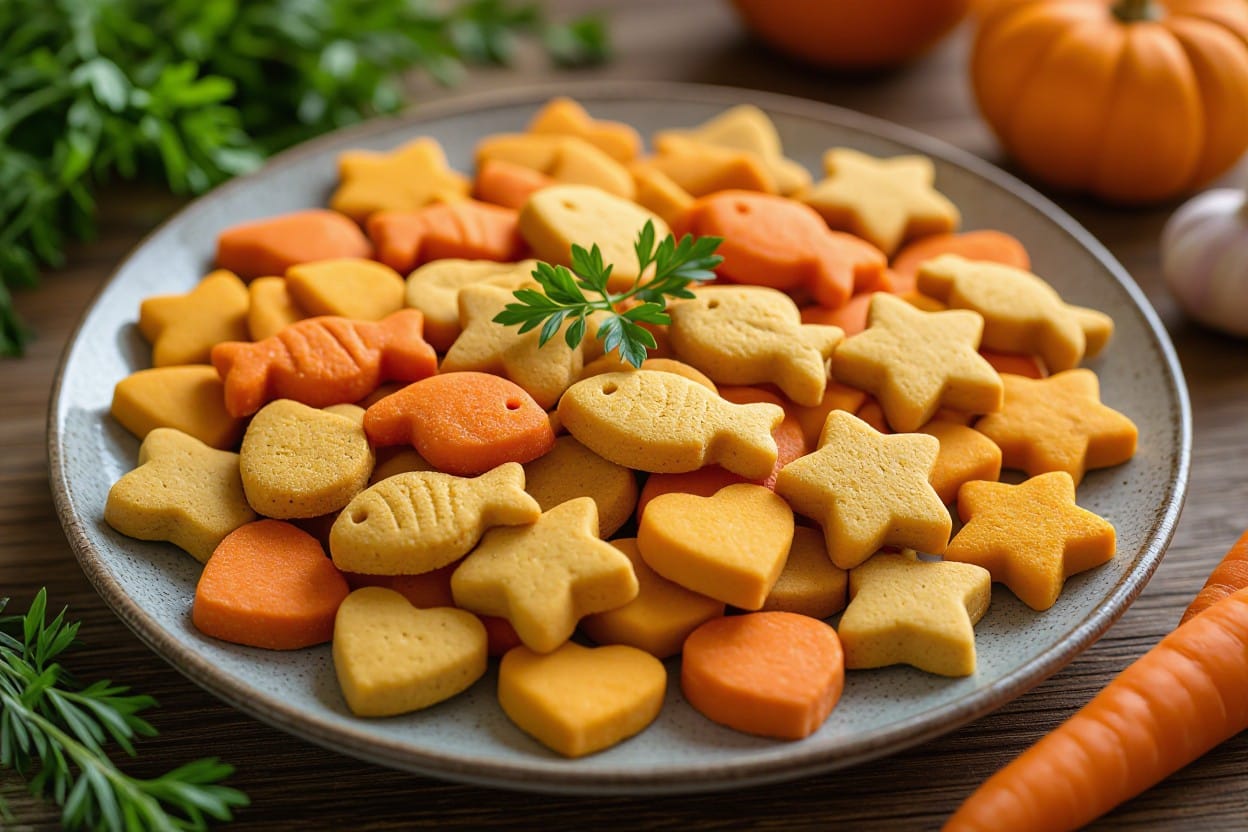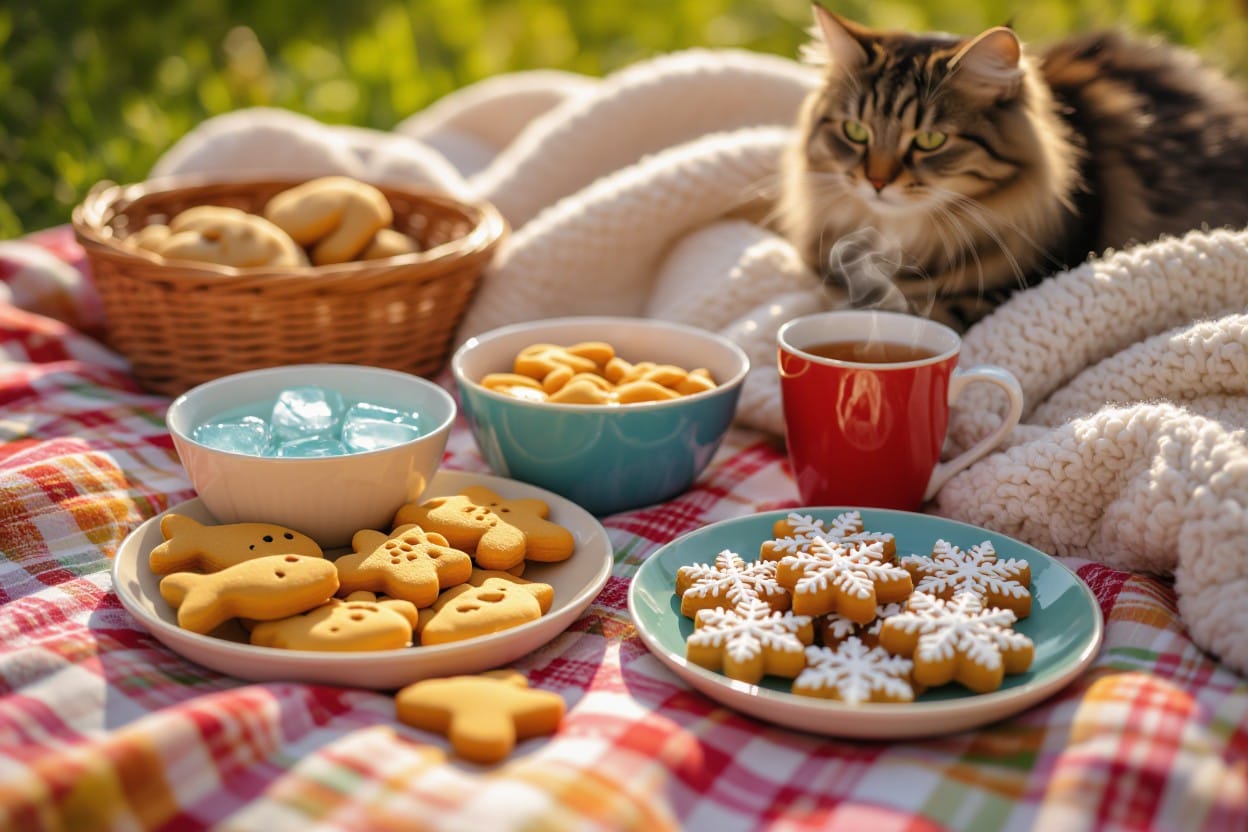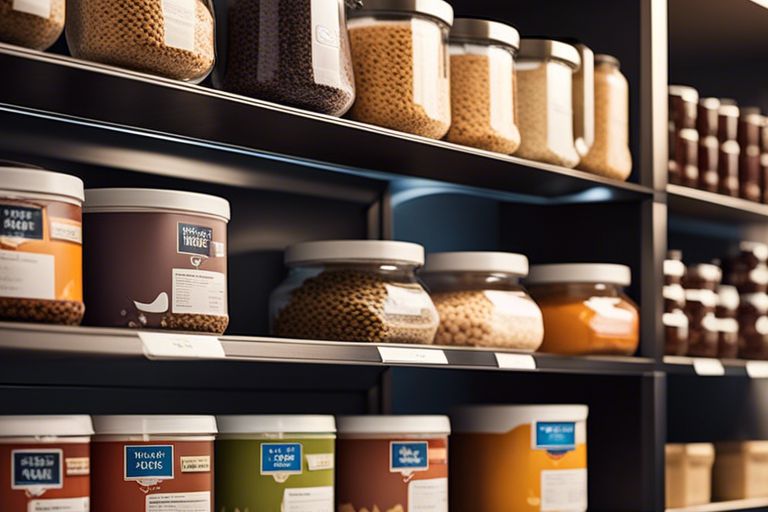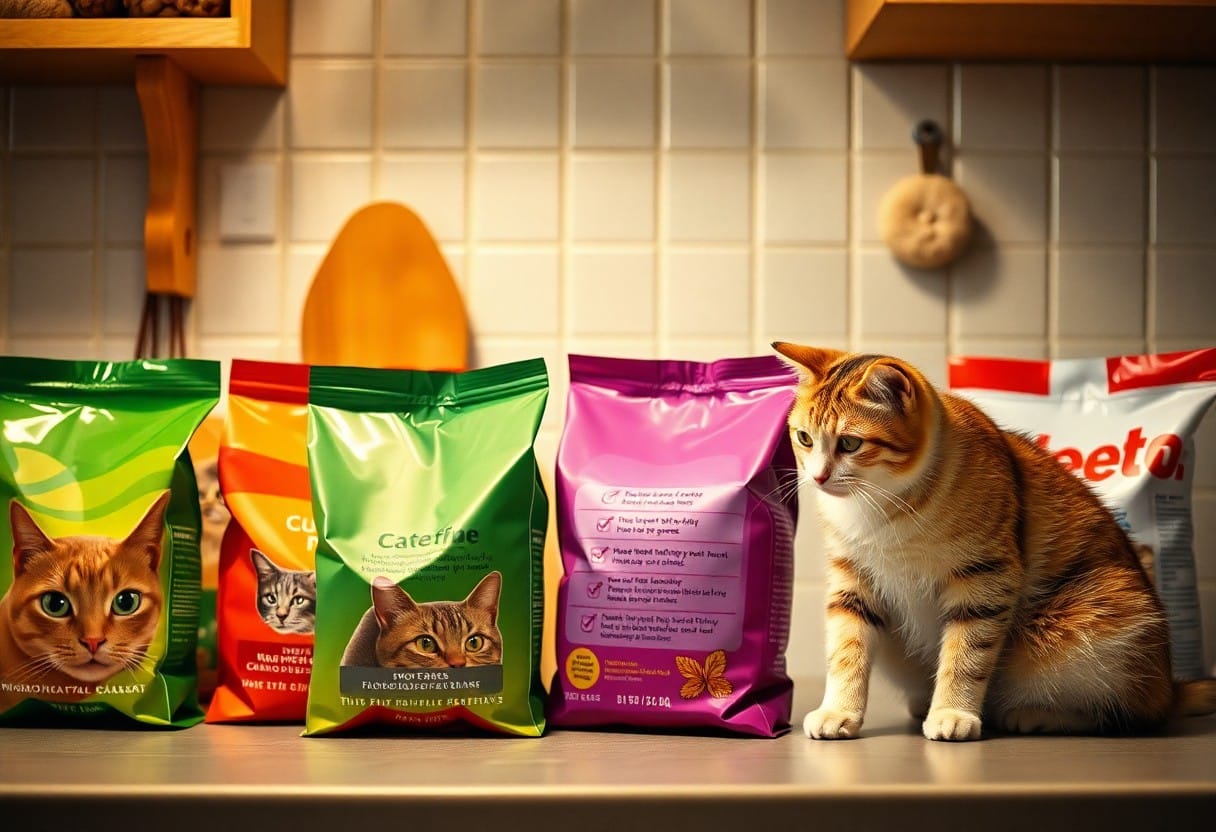
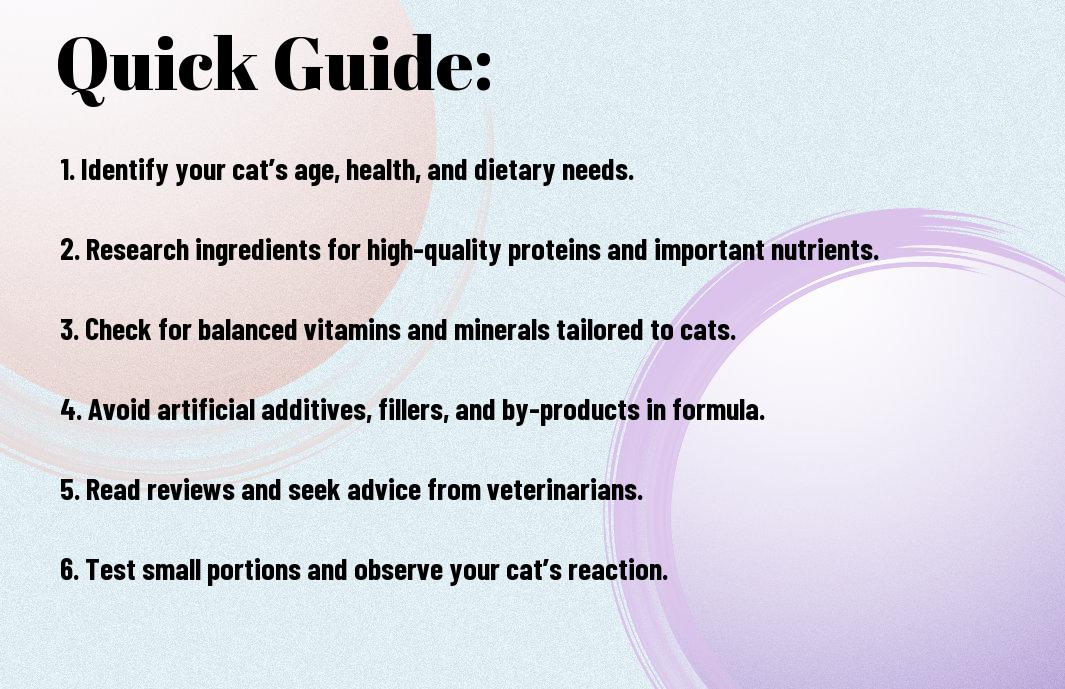
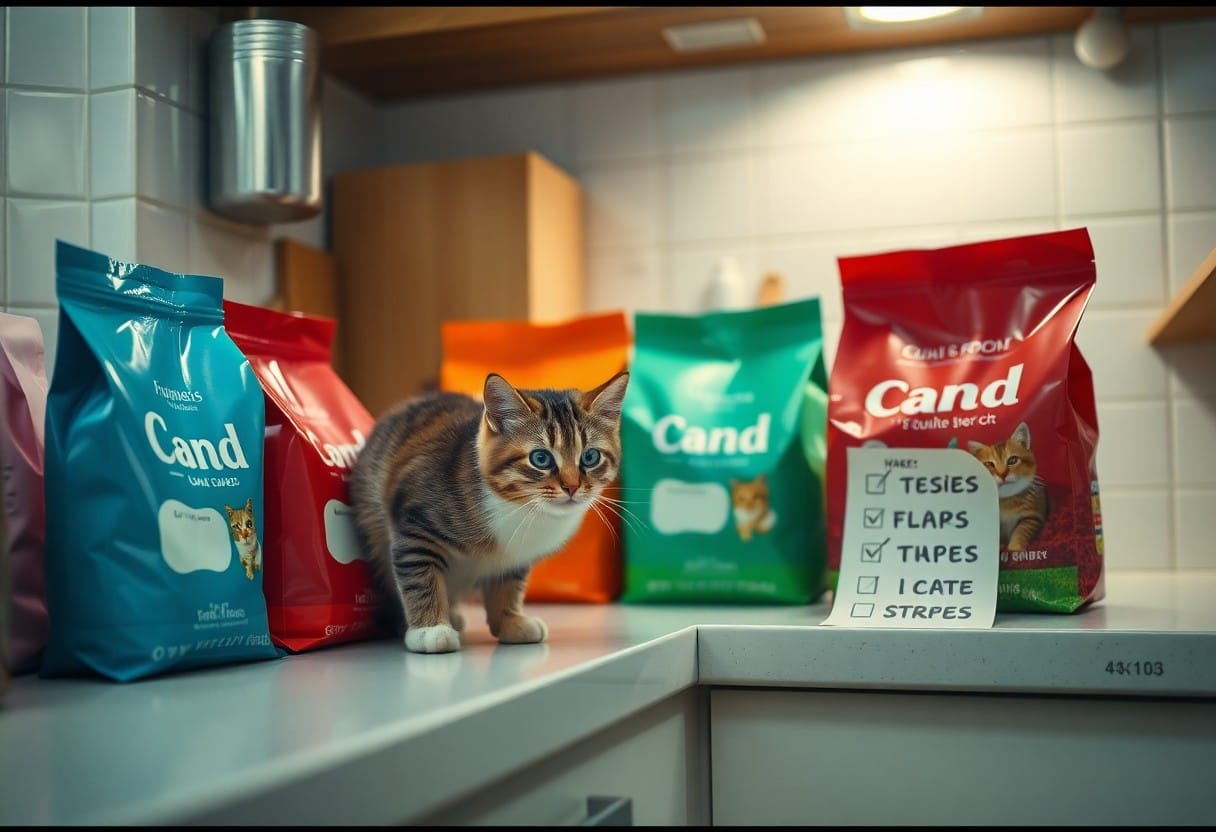
Understanding Cat Food Types
Before you investigate selecting a cat food brand, it’s important to understand the various types of cat food available. Each type comes with its distinct benefits and nutritional profiles. Here’s a breakdown to help you make a more informed decision:
| Cat Food Type | Description |
|---|---|
| Dry Food | Convenient, lower moisture content, and helps in dental care. |
| Wet Food | Higher moisture content, often more palatable, rich in protein. |
| Raw Diet | Raw meats and vegetables, can be beneficial but requires careful handling. |
| Homemade | You prepare the food; complete control over ingredients. |
| Grain-Free | Excludes grains, often chosen for cats with sensitivities. |
Dry vs. Wet Foods
Some pet owners prefer dry food for its convenience and shelf-stability, while others opt for wet food due to its palatability and higher moisture content. Dry food is typically more affordable and can aid in maintaining dental health, but wet food can be more appealing and better for hydration. Understanding your cat’s preferences alongside nutritional needs will guide your choice.
Grain-Free Options
Even though grain-free options are becoming popular, it’s important to evaluate their potential impact on your cat’s health. These foods omit grains like wheat, corn, and soy but may include alternative carbs like peas and potatoes. Many choose grain-free diets for cats with sensitivities, but they can also lead to imbalances if not properly formulated.
Types of grain-free cat food often utilize high protein sources, making them appealing to carnivorous felines. However, be cautious; some grain-free diets have been linked to dilated cardiomyopathy in cats due to potential nutritional imbalances. Opt for reputable brands that fulfill stringent quality control standards, as this will help ensure your cat thrives on a grain-free diet without unexpected health risks. Any choice you make should prioritize your cat’s individual needs and overall well-being.
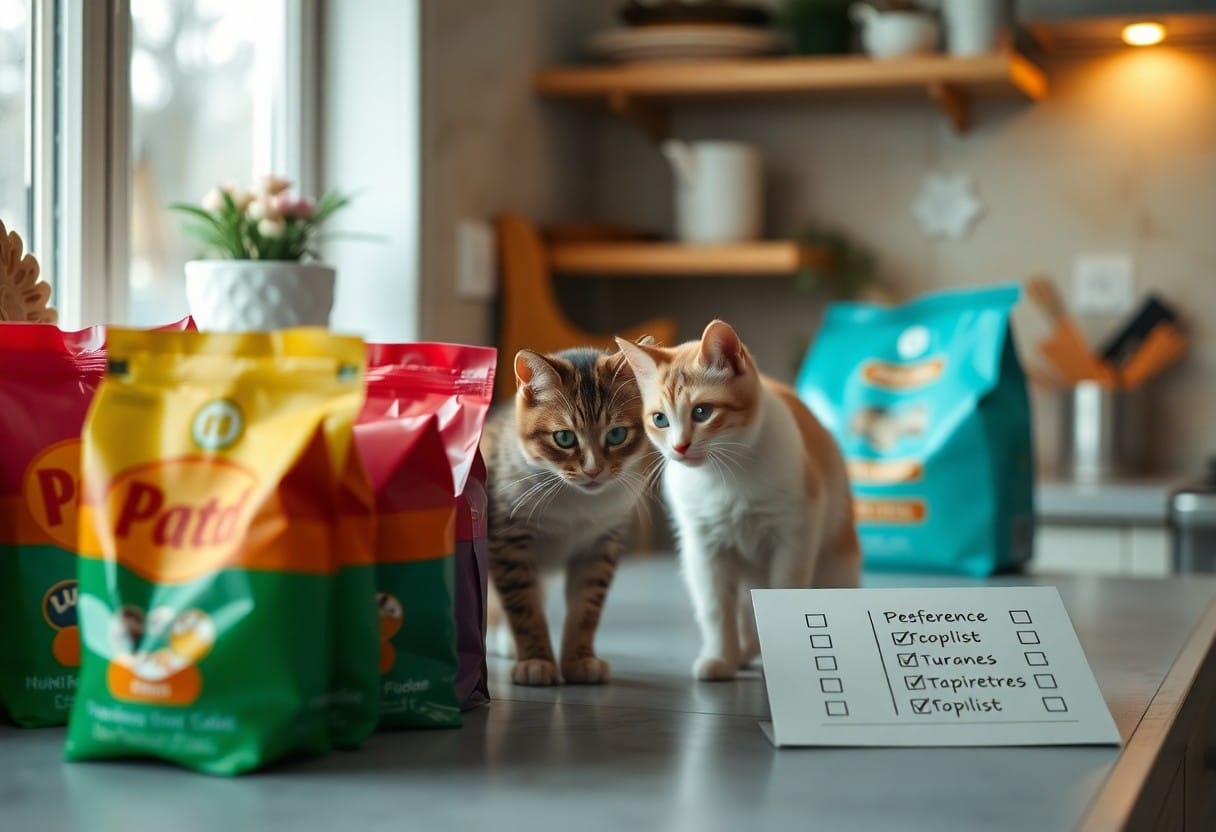
Helpful Tips for Making a Decision
After gathering information, it’s time to make a decision on the best cat food brand for your furry friend. To assist you in this process, consider the following tips:
- Evaluate the ingredients carefully.
- Look for brand reputation and reviews.
- Ensure the food meets your cat’s specific needs.
- Compare prices for value without compromising quality.
- Be open to trial and error as preferences may change.
Assume that your choices reflect your commitment to your cat’s well-being, making the right pick a rewarding experience.
Consulting Your Veterinarian
On your journey to selecting the ideal cat food, leveraging your veterinarian’s expertise can be invaluable. They can offer tailored recommendations that take into account your cat’s specific health needs, age, and lifestyle, ensuring a nutritionally balanced diet.
Observing Your Cat’s Preferences
Little details about your cat’s eating habits can guide you in picking the right food brand. Pay attention to what they seem to enjoy the most, as preferences may vary widely among cats. Take note of their appetite and energy levels after meals, as these can signal satisfaction with their food choice.
Plus, it’s imperative to consider your cat’s reactions to different textures and flavors. Some cats may have a pronounced preference for wet food over dry kibble, or vice versa. Being observant can help you identify anything from a sensitive stomach reacting negatively to certain ingredients to a preference for high-protein options that energize them. Always take cues from your cat to ensure they feel happy and satisfied with their meals.
Pros and Cons of Popular Cat Food Brands
Once again, it’s imperative to weigh the advantages and disadvantages when choosing a cat food brand. Below is a breakdown of some popular brands to help you make an informed choice.
Pros and Cons
| Brand A: High protein content | Brand A: Expensive ingredients |
| Brand B: All-natural ingredients | Brand B: Limited variety |
| Brand C: Vet recommended | Brand C: Some recalls |
| Brand D: Affordable | Brand D: Fillers present |
| Brand E: Grain-free options | Brand E: Hard to find |
Evaluating Quality vs. Cost
Pros of evaluating quality versus cost include ensuring your cat receives nutritional benefits while staying within your budget. Premium brands often use better ingredients, but it’s important to find a balance that fits your financial situation.
Brand Reputation and Recalls
Now, assessing a brand’s reputation can significantly impact your choice. You want to select brands that prioritize safety and transparency, with minimal recalls or negative history. This ensures your pet is eating food that is both nutritious and safe.
Understanding a brand’s reputation involves researching past recalls and customer reviews. Brands with frequent recalls may indicate poor quality controls, which could endanger your cat’s health. On the other hand, a solid reputation often reflects high-quality ingredients and reliable sourcing practices, giving you peace of mind. Choosing a reputable brand means you are prioritizing your cat’s safety and well-being.
Q: What should I look for on the cat food label when choosing a brand?
A: When examining a cat food label, focus on the first few ingredients. High-quality protein sources, such as chicken or fish, should be listed at the top. Additionally, look for acknowledgment of necessary nutrients like taurine, vitamins, and minerals necessary for your cat’s health. It’s also wise to check for any artificial additives, preservatives, or fillers, as these can be detrimental to your pet’s wellbeing.
Q: How can I determine if a cat food brand is reputable?
A: To assess a cat food brand’s credibility, research the company’s history, manufacturing practices, and any affiliations with veterinary nutritionists. Look for transparency in sourcing ingredients and check if they have undergone feeding trials. Customer reviews and testimonials can also provide insight, but verify that they come from reliable sources. Furthermore, ensure the brand complies with the standards set by organizations such as the Association of American Feed Control Officials (AAFCO).
Q: What is the difference between dry and wet cat food, and which should I choose?
A: Dry cat food, also known as kibble, is convenient, has a longer shelf life, and can help in maintaining dental health through its crunchy texture. Conversely, wet cat food generally contains more moisture, which can aid in hydration and is often more palatable for picky eaters. Your choice may depend on your cat’s specific health needs, preferences, and lifestyle. It is also possible to combine both types to offer a balanced diet.
